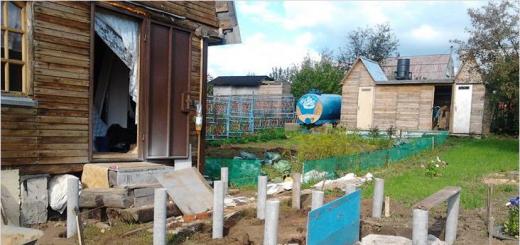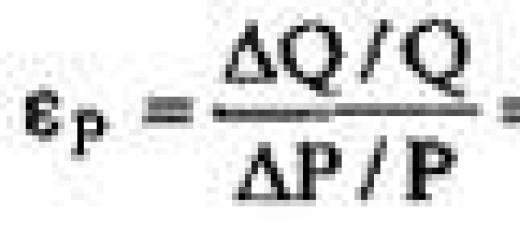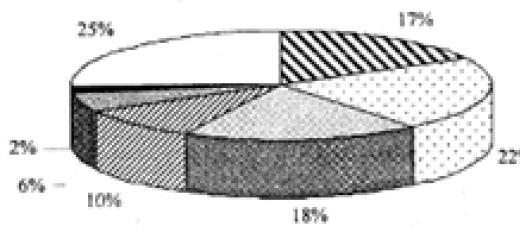slide 2
In March 1985, Mikhail Sergeevich Gorbachev became General Secretary of the Central Committee of the CPSU, N.I. Ryzhkov. Gorbachev inherited a country with a huge range of domestic and foreign policy problems. Gorbachev saw the problem of the rate of economic growth as a key link.
In the first post-war decade, the economic growth of the Soviet Union was about 10% per year. In the second decade, it dropped to 7%, but it was still impressive among industrial countries growth.
The situation became a crisis by the 1980s, when Gorbachev was given the markup for the next five-year plan, which provided for growth of 2.8% per year.
slide 3
The first stage of reforms (1985) Acceleration strategy
Gorbachev put the idea of accelerating development, i.e., increasing the rate of economic growth, as the basis of his policy. Within 15 years, it was planned to increase the national income by almost 2 times while doubling the production potential, to increase labor productivity by 2.3-2.5 times.
- Increasing the output of machinery and equipment
- Modernization of production
- Gospriyemka (product quality control)
- Tightening labor discipline
The country's leadership also promised to hold social policy based on the principles of social justice. Two priority problems were singled out - food and housing - and the deadlines for their resolution were determined. The food problem was supposed to be solved by 1990, the housing problem, according to the principle of “a comfortable separate apartment for each family,” by the end of the 20th century.
slide 4
Having set a course for accelerating socio-economic development, promising the people to sharply turn the economy "face to the people", the new leadership of the USSR developed a plan for the twelfth five-year plan (1986-1990) by analogy with the pre-war five-year plans - with an extensive construction program as a "second industrialization" plan. The plan was approved by the XXVII Congress of the CPSU and after approval by the Supreme Soviet of the USSR became law.
The main focus of the plan was on heavy industry. The role of a key link in reconstruction National economy devoted to mechanical engineering. Move from the production of individual machine tools to production complexes and industrial robots, introduce new class machines in the national economy, giving it an acceleration - such was the "general line". The implementation of this line required large investments, as well as the enthusiasm of the workers. It was supposed to use the following reserves: 1) to fully load the existing capacities, transferring them everywhere to a multi-shift form of work; 2) to strengthen labor discipline, aligning with the experience of leading workers; 3) through the efforts of local innovators and inventors to carry out mechanization and automation of their production. Finally, it was proposed to improve the quality of products.
slide 5
The failure of the acceleration policy and the deterioration of the economic situation
- The fall in prices for oil and oil products in the autumn of 1985 Foreign exchange earnings The USSR was reduced by two-thirds at once. This alone caused an economic crisis.
- Anti-alcohol company. The budget annually lost 40-50 billion rubles.
- Accident at the Chernobyl nuclear power plant on April 27, 1986, later - earthquakes in Armenia.
- Huge investment in engineering.
Page 370-371 - write out the reasons for the failure of the acceleration policy.
slide 6
The second stage of reforms. perestroika
Thus, as early as 1987, there was a threat of disruption to the acceleration course. Therefore, it was decided to move on to restructuring economic system as the main means of achieving acceleration. This restructuring in 1987-1988. was partial refund to the principles of the economic reform of 1965
Slide 7
Second stage of reforms (1987)
perestroika
- Increasing the economic independence of state enterprises (transfer to self-support and self-sufficiency)
- Creation of cooperatives and permission of the individual. labor activity.
- Establishment of farms (1989)
- Deprivation of district committees and regional committees of the CPSU of economic functions
- Attracting foreign investment through the creation of joint ventures.
Slide 8
Dizzy from restructuring
Enterprises received the right to foreign economic relations, including the creation of joint ventures and the free sale of part of their products on the foreign market. The state thus weakened the monopoly on foreign trade introduced in our country in 1918.
At the same time, most of the manufactured products, and in other cases, all of its products were included in the state order, withdrawn from free sale, which deprived enterprises of the freedom of self-financing. But it was promised to gradually reduce the state order, including enterprises in self-supporting relations. Labor collectives received the right (liquidated in 1990) to elect leaders of all ranks and to exercise control over the activities of the administration.
At the turn of 1989-1990. it became obvious that a transition to a market economy was necessary in all sectors of the national economy (except for the defense and heavy industries). However, the state was in no hurry to give up its monopoly on economic management.
Slide 9
L. Abalkin
The concept of the “regulated market” was based on the program of “renting the economy” (the main developer was Academician L. Abalkin), which was to be implemented from 1991 to 1995. Without fully realizing the scale of the crisis in the USSR economy, the developers of this program did not understand that the introduction of any economic reforms should go much faster, and not drag out for years.
G. Yavlinsky
The Shatalin-Yavlinsky Commission prepared the all-Union "500 Days Program".
It was decided on the basis of the programs of Abalkin and Shatalin-Yavlinsky to develop a single compromise option, although these programs were conceptually incompatible. As a result, since the 500 Days Program provided for the deprivation of the state's monopoly on economic power, it was rejected.
Slide 10
By the summer of 1991, more than 100 laws, resolutions, decrees were adopted on economic issues, but most of them did not work due to opposition from the republican authorities, who defended their sovereignty.
If in 1986-1988. the national income slowly but grew, then from 1989 it began to fall. Real incomes of the population began to decline. The shortage of all goods increased in the country. Their prices have gone up. The workers took to the streets with slogans of protest. A wave of strikes swept across the country. In December 1990, stating the collapse of the economy and the "failure of perestroika", the head of the government N. I. Ryzhkov resigned. It coincided with the reform of the government.
slide 11
Failure of the second stage
- Resistance
- Irresponsibility
- Limited development
- Criminality
Expand each characteristic in relation to the reasons for the failure of the second stage of reforms (pp. 375-377).
perestroika- the general name of the reforms and the new ideology of the Soviet party leadership, used to denote large and controversial changes in the economic and political structure of the USSR, initiated by the General Secretary of the CPSU Central Committee M. S. Gorbachev in 1986-1991.
In May 1986, Gorbachev visited Leningrad, where, at a meeting with the party activists of the Leningrad city committee of the CPSU, he first used the word "perestroika" to refer to the socio-political process:
“Apparently, comrades, we all need to reorganize. Everyone".
The term was picked up by the media and became the slogan of the new era that began in the USSR.
For your information,(because in many textbooks since 1985):
"Legally" the beginning of perestroika is considered 1987, when at the January plenum of the Central Committee of the CPSU perestroika was declared the direction of development of the state.
Background.
In 1985, Mikhail Gorbachev came to power. By that time, the USSR was already on the verge of a deep crisis, both in the economy and in the social sphere. The efficiency of social production was steadily declining, and the arms race was a heavy burden on the country's economy. In fact, all spheres of society needed to be updated.
Characteristics of the pre-perestroika administrative system: strict administrative and directive tasks, a centralized system of material and technical supply, strict regulation of the activities of enterprises and organizations. Management of the economy as a whole, and each of its branches, each enterprise, large or small, was carried out mainly by administrative methods with the help of targeted directive tasks. The command-and-order form of government alienated people both from labor itself and from its results, turning public property into a draw. This mechanism, as well as the political system, was personified in the people who reproduced it. The bureaucratic apparatus maintained a system that allowed its ideas to occupy profitable positions, to be "at the top", regardless of the actual state of affairs in the national economy.
The April (1985) Plenum of the Central Committee of the CPSU proclaimed a new strategy - the acceleration of the socio-economic development of the country. By the mid-1980s, the imminent need for change was clear to many in the country. Therefore, proposed in those conditions by M.S. Gorbachev's "perestroika" found a lively response in all strata of Soviet society.
If we try to defineperestroika , then in my opinion,"perestroika" - this is the creation of an effective mechanism for accelerating the socio-economic development of society; comprehensive development of democracy strengthening discipline and order respect for the value and dignity of the individual; renunciation of command and administration, encouragement of innovation; a turn to science, a combination of scientific and technological achievements with the economy, etc.
Restructuring tasks.
The entry of the USSR into the era of radical transformation dates back to April 1985 and is associated with the name of the new General Secretary of the Central Committee of the CPSU M.S. Gorbachev (elected to this post at the March Plenum of the Central Committee).
The new course proposed by Gorbachev assumed the modernization of the Soviet system, the introduction of structural and organizational changes in economic, social, political and ideological mechanisms.
In the new strategy, personnel policy acquired particular importance, which was expressed, on the one hand, in the fight against negative phenomena in the party and state apparatus (corruption, bribery, etc.), on the other hand, in the elimination of political opponents of Gorbachev and his course (in the Moscow and Leningrad party organizations, in the Central Committee of the Communist Parties of the Union Republics).
The ideology of reform.
Initially (beginning in 1985), the strategy was to improve socialism and accelerate socialist development. At the January 1987 Plenum of the Central Committee of the CPSU, and then at the XIX All-Union Party Conference (summer 1988) M.S. Gorbachev laid out a new ideology and strategy for reform. For the first time, the presence of deformations in the political system was recognized and the task was to create a new model - socialism with a human face.
The ideology of perestroika included some liberal democratic principles (separation of powers, representative democracy (parliamentarism), protection of civil and political human rights). At the 19th Party Conference, the goal of creating a civil (legal) society in the USSR was proclaimed for the first time.
Democratization and Glasnost became the essential expressions of the new concept of socialism. Democratization touched the political system, but it was also seen as the basis for the implementation of radical economic reforms.
At this stage of perestroika, publicity and criticism of the deformations of socialism in the economy, politics, and the spiritual sphere were widely developed. Many works of theorists and practitioners of Bolshevism, who were once declared enemies of the people, as well as figures of Russian emigration of various generations, became available to the Soviet people.
Lesson ___RESTRUCTURING POLICYIN THE ECONOMIC SPHERE
Common goals: describe the reform policy.
Auxiliary goals: characterize the policy pursued by MS Gorbachev in comparison with the political activities of Yu. V. Andropov; to reveal the concepts of "perestroika", "acceleration". Determine the results of restructuring and acceleration.
Additional goals: conduct a comparative analysis of the policies of Yu. V. Andropov and MS Gorbachev; identify the results of the restructuring and explain why they did not bring the expected result; to establish the factors operating in different spheres of society that prevented perestroika.
Basic concepts and terms: perestroika, acceleration strategy, economic restructuring, conversion, consumption crisis, personnel revolution.
Important dates and events:
1985 - proclamation of a course towards "acceleration of socio-economic development."
June 1987 - adoption of the economic reform at the Plenum of the Central Committee of the CPSU.
1990 - Program "500 days".
During the classes
I . Learning new material.
Continuation of the course of Yu. V. Andropov.
On the path of economic reforms.
1. Continuation of the course of Yu. V. Andropov.
In order to organize knowledge and based on the knowledge of the main
schools formulate brief description activities
Yuri Vladimirovich Andropov (see §37, pp. 353-356).
crisis of communist ideology and system;
the inertia of the ruling bureaucracy;
growing socio-economic and foreign policy difficulties;
mass dissatisfaction with their position;
consumption system crisis;
crisis of mass production;
crisis of agriculture;
the desire for change becomes widespread;
the emergence of informal social movements that demanded the democratization of socialism.
Highlight the stages in the activities of M. S. Gorbachev:
/ stage- April 1985 - June 1987 - the policy of accelerating the economic and social development of the USSR;
II stage-summer 1987 - 1990
Questions for students:
Try to explain why neither the leadership of the country nor the society has formed a common opinion on the direction of the reforms?
What is the reason for the difficult choice of reform strategy in
USSR?
Give a description of the chosen course for acceleration.
Explain, based on the material of § 39, in what way did this socio-economic course turn out to be ineffective?
What is the reason for the ineffectiveness of the acceleration policy?
Discuss what explains the fact that the authorities tried to hide the consequences of an explosion at a nuclear power plant 130 km north of Kiev, despite the serious danger of radioactive contamination, and at that time there was talk of liberal transformations.
2. Along the path of economic reforms.
The teacher makes some explanations:
Already in 1986 it became obvious that the acceleration is not getting
Xia, a course was put forward for "perestroika".
Students get acquainted with the table "Stages of economic reform in the USSR (1985-1991)".
Consolidation of the studied material.
(Test)
Homework: § 39. Know new concepts, terms, dates and events. Complete the task of question No. 3 in writing: "Compose theses of the answer on the topic "The Essence of Perestroika"".
Prepare a presentation: "The role of the media in expanding the glasnost process."
The main reason for the start of reforms in the USSR was undoubtedly the difficult economic situation that had developed in the country since the early 1980s. The first attempts to carry out economic reforms belonged to Yu.V. Andropov. He tried to strengthen labor discipline, began the fight against theft and corruption. Andropov's activity led to only a slight short-term effect. The Soviet system was in the grip of a structural crisis, but the Soviet leadership did not realize this.
On March 11, 1985, M.S., the youngest member of the Politburo, was elected General Secretary of the Central Committee of the CPSU. Gorbachev. Gorbachev was a nominee of Yu.V. Andropov. The head of state, unlike L.I. Brezhnev and K.U. Chernenko, had reliable information about the economic situation in the country. Unlike most leaders of the highest Soviet nomenklatura, he was aware of the need for radical socio-economic and political reforms. At the same time, Gorbachev understood that with the help of forceful methods - "tightening the screws", it was impossible to solve economic problems. In terms of personality, Gorbachev also differed significantly from previous Soviet leaders.
A number of foreign policy reasons also contributed to the deterioration of the economic situation.
By 1985, the external debt of the USSR exceeded $31 billion. The size of the debt gave rise to a number of problems. It was getting harder and harder to find new lenders. The latter demanded more and more high interest. And finally, the debt had to be serviced annually, i.e. pay interest on previous loans.
The second major foreign policy problem for the Soviet leadership was the sharp drop in world prices for oil and petroleum products. In the mid 1980s. prices for crude oil produced in the USSR have reached an extremely low level - about 8 dollars per barrel. The Soviet economy was largely dependent on the export of energy resources, in particular crude oil. As a result, export earnings from the sale of oil fell sharply.
The third important foreign policy factor that influenced the deterioration of the economic situation was the active military campaign in Afghanistan. According to some estimates, it annually cost the economy 3-4 billion dollars. At the same time, the Afghan adventure "pushed" Western loans and the flow of new Western technologies from the USSR. It also had a negative effect on the Soviet economy.
Fourth, in 1983, US President Ronald Reagan put forward the idea of a "Strategic Defense Initiative" (SDI), or "Star Wars" - space systems that could protect the United States from a nuclear strike. This program was carried out in circumvention of the ABM treaty. The USSR did not have the technical capabilities to create the same system. Although the US was also far from successful in this area and the idea of SDI was intended to force the USSR to waste resources, the Soviet leaders took it seriously. At the cost of great effort, the Buran space system was created, capable of neutralizing SDI elements.
Thus, the situation arose that the Soviet government did not have sufficient foreign exchange funds to import the necessary consumer goods (TNP) and food, which were produced in insufficient quantities in the Soviet Union.
Despite the deteriorating economic situation in the mid-80s. the Soviet leadership did not form a coherent program of socio-economic transformations. There was only a certain concept of reforms. In accordance with it, the fundamental foundations of the Soviet economy - planning, directive management, subsidization of certain industries were preserved. In addition to state ownership, it was planned to widely develop cooperative ownership. The independence of enterprises was to increase significantly.
The economic transformation of the Gorbachev era went through three stages.
Stage I (1985 - 1986) - the stage of "acceleration of socio-economic development". The main idea was that socialism has huge untapped resources, it is necessary to put them into action and make a breakthrough in the competition with the West.
Stage II (1987-1989) - the stage of economic liberalization. Introduction of elements of a market economy. The goal is to combine a planned economy with a market economy.
Stage III (1990-1991) - unsuccessful attempts to carry out market reforms.
In April 1985, at the plenum of the Central Committee of the CPSU, it was recognized that the economy of the USSR was in a difficult situation. Gorbachev proclaimed the course of "all-round intensification of production based on the introduction of the achievements of scientific and technological progress, improvement of planning and management, strengthening organization, discipline and order in all sectors of the economy." The main element of the new policy was declared " human factor».
In May 1985, the "Food Program" was adopted, according to which there should have been an improvement in the provision of Soviet people with basic foodstuffs.
At the same time (May 1985) the famous anti-alcohol campaign was launched. It was led by Gorbachev's ally - the secretary of the Central Committee of the CPSU for ideology, E.K. Ligachev. On May 7, 1985, the resolution of the Central Committee of the CPSU "On measures to overcome drunkenness and alcoholism" was adopted. It noted that the economy is suffering enormous losses due to absenteeism and drunkenness in the workplace. The immoderate consumption of alcoholic beverages was one of the main causes of early death among men of working age. It was envisaged to annually reduce the production of vodka and alcoholic beverages, by 1988 to completely stop the production of fruit and berry wines. Alcoholic beverages were sold to persons over the age of 21.
The anti-alcohol campaign led to a positive effect. The consumption of alcohol per capita has decreased, the mortality of people of working age has decreased, and the average life expectancy has increased.
At the same time, home brewing, the consumption of non-edible alcohol-containing liquids and chemicals increased. There were problems with the provision of sugar in the country, the quality of bread deteriorated due to the lack of yeast, there was a lack of alcohol in medical institutions. In 1987 alone, 11,000 people died due to the consumption of alcohol substitutes. State budget in 1985-87 received 37 billion rubles less in taxes from the production of alcohol. In autumn 1988 the anti-alcohol campaign was curtailed.
In February 1986, at the 17th Congress of the CPSU, the question was correctly posed: "Turn production towards the consumer and activate the human factor." But appeals alone were indispensable: only one-seventh of the main production assets were involved in the production of consumer goods. And the government started a small-scale industrialization - in order to eventually modernize the backward light industry. Then they reduced the purchase of consumer goods and abandoned currency funds for the purchase of equipment abroad. The result is minimal. Part of the equipment remained in warehouses and in the open air due to the lack of production space. Entire production lines were idle due to improper operation, lack of spare parts, poor quality of raw materials. All this, however, ended in failure already at the first stage: billions of state investments in basic industries disappeared without a trace in the general bedlam - the light industry did not wait for new equipment, materials, technologies.
Internal subjective factors also contributed to the deterioration of the situation in the economy.
During his trips abroad, Gorbachev refused to use local cars. “Each foreign trip required up to twenty ZIL-115 vehicles to be delivered to the country of visit. Under them, seven IL-76 transport aircraft were needed. At the same time, visits were made all over the world (Washington, Havana, Delhi, etc.) ... On the other hand, the number of delegation members increased each time, ... reached 400-500 people, which also required at least five to six aircraft ... Usually, two planes were allocated for the delegation headed by Brezhnev.
On April 26, 1986, an accident occurred at the Chernobyl nuclear power plant. According to the most minimal estimates, more than 20 billion rubles were required to eliminate the consequences of the explosion.
By the beginning of 1987, it became clear to Gorbachev that the reform of the economy was marking time. This was due to the fact that the reform had to be carried out by Soviet party officials, who did not need it, since they lived in a different reality compared to ordinary citizens of the USSR (special stores, special clinics, resort services, special dachas, personal drivers and other personnel, etc.). .d.). Officials did not understand the goals of the reforms and did not want to lose their influence.
Gorbachev declares the need to introduce self-financing, self-sufficiency at state enterprises. The law "On the state enterprise (association)" was adopted. The head of state urged to increase the output of consumer goods at heavy industry enterprises in general, and at factories of the military-industrial complex in particular. It was in January 1987 at the plenum of the Central Committee of the CPSU that Gorbachev first uttered the term "perestroika". "Perestroika is a decisive overcoming of stagnant mechanisms and a breakdown of the braking mechanism, the creation of an effective acceleration mechanism based on the creativity of the masses, the development of democracy and self-government, and the expansion of glasnost."
But the economic independence of enterprises was limited by the planned administrative system of the economy as a whole. Freedom turned into only the right to uncontrolled spending of public funds and led to inflation in prices, a reduction in production volumes. At the same time, the growth of earnings did not affect the output of final consumer products in any way, since the money was paid not only to producers of goods, but to everyone else without exception.
Gorbachev's ideas about economics were largely mythological. In November 1987, he declares that it is necessary to return "the Leninist concept of building socialism." In this regard, the idea of mass development of cooperation, taken from the work of V.I. Lenin "On cooperation". In the USSR, it is proposed to develop new forms of economy, especially in the service sector and the production of consumer goods - cooperatives, various forms of leasing state property, and individual labor activity is allowed. Gorbachev goes on to state that "it is necessary to develop new forms of socialist property."
But already in 1988 it became clear that the "perestroika" of the economy did not contribute to a real improvement in the situation. And then Gorbachev convenes the XIX party conference (June 28 - July 1, 1988). In his speech, he states that “the previous system of mandatory tasks in terms of production volume has been retained, the production of goods that are not in demand among consumers continues. The economy continues in many ways to move along an extensive path.
Gorbachev brings to the attention of the participants that since 1989 all enterprises must switch to self-supporting and self-sustaining: “... various forms of contracting and leasing should be developed, a wide network of cooperatives should be created, attempts to command collective farms and state farms should be immediately stopped.”
"Radial economic reform” was actually poorly implemented. It was a reform mostly "on paper". According to official data, the growth of industrial production in 1986-88. amounted to 2.8% annually, in 1989 - 2.4%, and in 1990 there was a drop in industrial production by 2%. And at the same time, changes in the structure of industrial management actually lead to its chaos.21 Already in 1988, serious problems began to arise with the provision of the population with food and consumer goods. In 1989, the card-voucher system for individual products began to be introduced, in 1990-91. it covers dozens of food and non-food items. Gradually, the consumer goods market is captured by cooperative producers. The activities of small private producers lead to speculation and price increases. In fact, cooperators individual entrepreneurs They pay almost no taxes to the state, as there is no tax collection mechanism. The place of the state is occupied by gangs of racketeers.
In 1990, the head of the government, N. Ryzhkov, was forced to admit that the country's economy was in a deep crisis. In his report on May 24, 1990, at the session of the Supreme Council, he admitted that over 4 months of 1990, production volumes decreased by 19% compared to the level of the previous year in Azerbaijan, Armenia - 9%, Georgia - 8%, etc. . The government is forced to buy 27 million tons of grain in 1990. Due to strikes and interethnic conflicts in 1989, 7 million man-days were lost, and in 4 months of 1990 - 9.5 million.22 Deficit state budget The USSR in 1990 amounted to 58.1 billion rubles.
At the same time, in 1990, inflation was actively developing. Initially, it was generated by the “social orientation” of the reforms. Since 1985, the state began to increase wages and various social benefits. Thus, there was an increase in the money supply, while the number of goods in the domestic market remained practically unchanged. The weakening of the ruble led to an increase in natural exchange - barter transactions, which in turn reduced the collection of taxes. In this situation, the "Concept of transition to a regulated market economy" was put forward. Its developers were N. Ryzhkov and V. Pavlov. It provided for a slow transition to a market economy with the dominance of state ownership and strict state control in the economy. A number of laws were adopted that made it possible to build a market economy: the “Property Law”, which allowed private property, the “Banking Law”, which allowed the creation of private and joint-stock banks, and the “Law on Investment Activities”. In 1991, the final collapse of the planned economy took place. To slow down the development of inflationary processes; inflation in 1991 reached 10% per month, the government headed by V. Pavlov announced on April 1, 1991 monetary reform. However, this measure proved to be ineffective. In the fall of 1990, Western countries began to deliver humanitarian aid to the USSR. They stopped only in 2000 with the election of V.V. Putin. In practice, these deliveries helped to destroy the little competitive economy of the USSR and Russia.
To be fair, it should be noted that in 1991 market mechanisms still began to operate with difficulty. The first joint-stock companies, large private enterprises; Soviet co-operators are gradually turning into an entrepreneurial class. Mafia groups and corrupt Soviet officials began to carry out the division of entire sectors of the economy. Moreover, even a part of the country's gold and foreign exchange reserves was plundered. Thus, unemployment increased, and the impoverishment of the main part of the population reached its extreme limit, the black market flourished. These were the results of an ill-conceived and spontaneous economic policy.
Since the middle (70s - the shadow economy has penetrated into all spheres economic life; in 1980, the Central Committee of the CPSU took measures aimed at fighting corruption, and in 1981–1982. passed a few loud ones. Litigation. At the same time, attempts were made to strengthen labor discipline and increase labor productivity.
The radical reform was carried out under the slogans: "glasnost", "acceleration", "perestroika". The movement that had begun was called upon to reform existing system, but led to its destruction (this was reminiscent of the reforms of the mid-19th century). The reforms got out of control of their initiators. Glasnost, which opened up access to previously closed information and gave rise to a pluralism of recipes for social and national reconstruction, yielded results by mid-1986.
In July 1988, at the XIX Party Conference, it was stated that "glasnost should not harm the interests of the state, society and human rights." But glasnost led to the undermining of the ideological indisputability of party decisions and assessments. Criticism of Stalinism inspired criticism of the “administrative-command system of government” generated by it, of socialism as a system as a whole.
Since 1986, the role of censorship has been limited; sharp ideological discussions on political issues began to unfold in the organizations of the liberal and creative intelligentsia (the Union of Cinematographers, the Union of Theater Workers, the Union of Writers, etc.), in the press and the press. Society was quickly divided into democrats, national patriots and communists.
In the republics of the USSR, national tension was growing. Demands were put forward for the recognition of the state status of national languages, the return of deported peoples to their historical homeland, and the withdrawal of Russian troops from the territories of the republics. Since 1988, a series of interethnic armed clashes began.
There were also problems in the economic sphere. Growth rates in industry and agricultural production were declining, since 1991 inflationary trends have been rapidly growing; The reforms were supposed to expand the rights of enterprises and labor collectives, to develop private entrepreneurial initiative more widely.
In June 1987, the Law "On the State Enterprise" (which has been applied to all enterprises since 1989) was adopted, providing for new principles of cost accounting and self-financing. Enterprises received the right to independently plan their activities, establish direct, horizontal ties with other enterprises, act on the basis of contracts, orders, and economic standards. Centralized investment and planner directives have significantly reduced their scope. In practice, state monopolies (government orders, pricing, supply, taxation were administered by the central authorities) limited the scope of commercial activities of enterprises. A system of subsidies received by enterprises in a centralized manner; a significant deficit and the “shadow economy” also prevented the establishment of a new pricing system. The formation of the market took place with great difficulties.
November 1986 and May 1988 the law legalized private entrepreneurial activity in a number of manufacturing and service areas. The cooperative sector of the economy and individual labor activity began to develop rapidly. At the same time, in the legalized private sector, there was a “laundering” of capital “knocked together” in the sphere of the “shadow economy”.
There were four levels of prices (state, contractual, cooperative, "black market"), which also led to the complication of the economic situation. The development of private entrepreneurship ran into organizational, financial, ideological and psychological (rejection) obstacles. The emerging market economy has largely become speculative in nature, focusing in its work on momentary profit.
The expansion of the sphere of private initiative in the agricultural sector began in 1988, when the introduction of land leases (for up to 50 years) laid the foundation for the formation of farming. The new Regulations on collective farms (1988) provided for the establishment of the size of a household plot and the number of livestock in a private household based on the decisions of the collective of each collective farm.
However, the rental movement has not been widely developed. Even the recognized right to freely acquire land in the absence of developed infrastructure and agricultural machinery from the peasants did not change the situation. The control of local authorities over collective farms (the allocation and determination of the size of household plots, the conclusion of lease agreements, etc.) also did not contribute to the rapid growth of farms.
The course of "socialist reformism" in the CPSU was taken at the very beginning of the perestroika movement: conservative-minded leaders were removed from the Politburo, and new people were added to the governing body. A change of composition occurred at each new stage of perestroika. All leading party structures were updated.
For the transformation to be effective, it was considered necessary to fully restore the role of the Soviets as "organs of socialist power", the role that the party organs had appropriated to themselves. At the same time, the leading role of the party must be preserved. To legitimize this role, various political and organizational measures were taken: alternative elections and secret voting in the election of responsible party workers.










